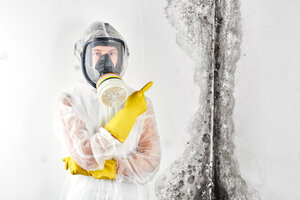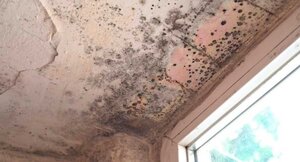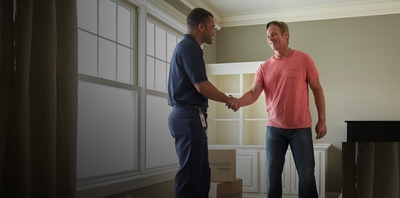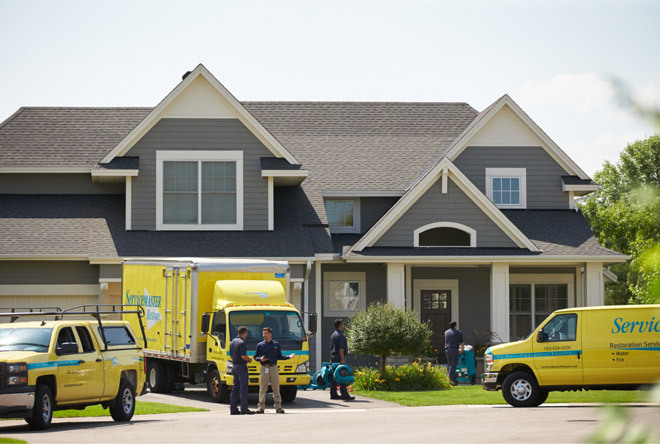Mold remediation services in lafayette
Advancements in Mold Removal - Small Particle Remediation
More and more people are being exposed to toxic mold with the widespread flooding in the US over the last several years. In the aftermath of this flooding, mold immediately begins to grow, especially in high humidity.
Over the last three decades, Service Master Restore® has been at the forefront of mold detection and remediation. The latest mold remediation technology cleans at the microscopic level and is called Small Particle Remediation.
If you need small particle mold remediation, we've got you covered! Give our team a call at(337) 317-5206 orcontact us online to get started.

How To Remove Mold Spores From The Air
After the mold-contaminated materials have been removed, Small Particle Remediation begins. There are three separate phases to Small Particle Remediation. The first phase is HEPA filter vacuuming to remove all debris. This is followed by weighing down the mold particles in the air by a fogging knockdown procedure which causes the spores to fall to lower surfaces. Then the last phase is wiping down the surfaces.
During the HEPA filter vacuuming, 99.97% of the mold particles are removed to a .3 micron in size. This is followed by the knockdown fogging phase. An odorless liquid agent that has a slow evaporation rate is sprayed into the air to weigh down the microscopic mold spores so that the next wipe down phase can begin.
Since mold spores actually still contain mold toxins even after die off, there is no need to kill the mold as in a biocide fogging procedure. The knockdown fogging step in small particle remediation acts as a weight that attaches to small mold particles and particle fragments whether dead or alive. This knocks the small particles and fragments down to lower surfaces so that they can be removed completely during the final wipe-down stage.
During the last phase of Small Particle Remediation, grain alcohol or other mild detergent is used to wet clean clothes to ascertain all mold spores are captured in the wipe down phase. Contaminated rages are frequently disposed of throughout the process to prevent cross-contamination. All surfaces in the structure are completely wiped down.
The Importance of Small Particle Remediation
With widespread flooding and thousands of people having been exposed to toxic mold, the medical community during several studies have discovered in a small percentage of the population a chronic condition that inhibits the body from detecting mold toxins. The disease is Chronic Inflammatory Response Syndrome (CIRS).
When genetically susceptible people inhale mold spores, it does not activate their immune system as it would normally. Instead, the mold toxins reproduce unabated and circulate throughout the body causing damage and causes muscle and joint weakness, chronic fatigue, vertigo and aches, and pains. In these immune-compromised individuals, medical treatment is necessary to treat CIRS. This is even if they are no longer exposed to the mold because their body cannot eliminate the mold toxins once in their system. This may be fatal in some patients. This disease in many patients can be misdiagnosed or undiagnosed for years causing further damage.
For property and business owners, this could lead to legal ramifications years later if they don’t opt for complete remediation measures available to them. Small Particle Remediation can ascertain that you did all you could to completely eradicate all mold from a building or living space.
Small Particle Remediation is an important final step because during traditional remediation methods mold spores are merely pulverized into many small fragments. These small particles contain mold toxins. These particles are so small they are not captured by air scrubbers as they stay in constant motion floating around in the air. Therefore, the use of knockdown fogging is a critical step in Small Particle Remediation.
Since traditional air sampling cannot detect small mold fragments as they are no longer recognizable as spores, Small Particle Remediation is the only way to assure that you did all you could to protect yourself and give occupants or workers the peace of mind there is no detectable mold growth.
Water Damage Can Lead to Toxic Mold Growth
There’s no getting away with not taking care of water damage as soon as it happens anymore. Toxic mold starts to spread immediately in the right conditions. If your home or structure has been exposed to flood water or water leakage, calling a Lafayette water damage restoration expert to inspect your property is your best protection against the health hazards associated with toxic mold.
How Long Does Mold Remediation Take?
Mold remediation usually takes 1-5 days; more severe cases can take several weeks. There are several factors can have an impact on how long the remediation process takes, including:
- Size and extent of mold growth: Generally, cases with large affected areas and spreading to multiple rooms or levels of a building can take longer to treat.
- Penetration into porous materials: More extensive remediation measures are required when mold spreads beyond visible surfaces and penetrates porous materials like drywall or carpeting.
- Type of mold present: Different types of mold require different remediation methods, and some may be more difficult to eradicate than others. For example, black mold(Stachybotrys chartarum) is particularly stubborn and requires specialized treatment.
- Severity of health risks: If people in the affected space are experiencing mold exposure symptoms, additional precautions may be needed, like setting up containment areas or using specialized equipment.
- Structural damage: Prolonged exposure to moisture from mold growth can cause structural damage, which may require repairs before the remediation work can begin.
- Addressing underlying moisture issues: Even after removing all visible traces of mold, it's important to address any underlying moisture issues that contributed to its growth in the first place. Failure to do so can allow the mold to return.
For more information about our mold remediation services near you, call us at (337) 317-5206 or contact us online to get started with a free consultation.




